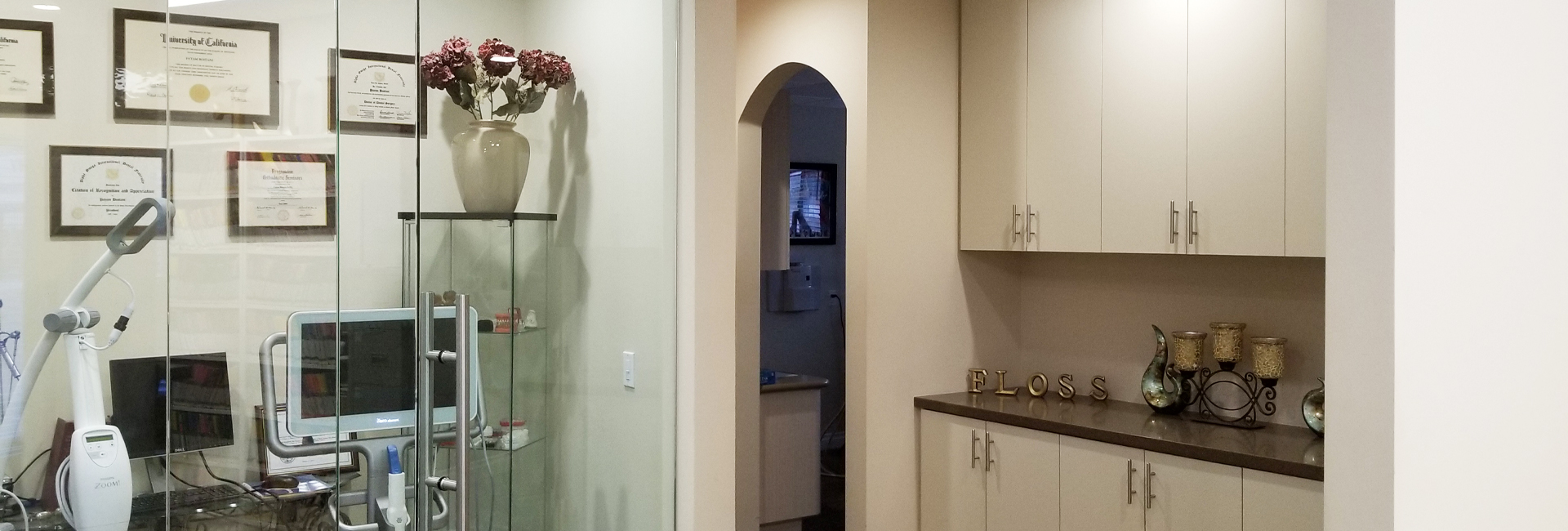If you’re looking for a root canal in Burbank, Dr. Bostani’s Advanced Dental is here to help provide you with the relief you need. Our team is one of the finest in the Greater Los Angeles area and we only use the best dental equipment and techniques to ensure procedures are safe, successful, and comfortable.
When are Root Canals Performed?
Achy or intense, sharp pain with no apparent cause, swollen gums, discoloration, and heightened sensitivity may all be signs of infection or damage in the interior of a tooth. If left unchecked, an infection can destroy a tooth from the inside, necessitating extraction due to the risk of the infection spreading. A root canal is intended to remove infected tissues, including the nerve of the tooth. The procedure offers immediate relief while preserving the viability of the tooth and avoiding the need for an implant. It’s the logical cure for the common toothache which is why it’s one of the most frequently performed and well-known of oral procedures.
Fact Check: No, Root Canals are Not Painful!
Contrary to what some of us have been hearing our whole lives, a modern-day root canal is not a particularly uncomfortable procedure. Local numbing agents thoughtfully deployed typically prevent patients from feeling any real pain during the procedure. Yes, there is a little initial discomfort but, when performed by a skilled dentist, the experience is typically comparable to most other treatments, such as getting a filling. At Dr. Bostani’s Advanced Dental, we prioritize patient comfort and wellbeing above all else.
What Happens During a Root Canal?
Generally, a root canal begins with a small hole drilled into the afflicted tooth after anesthesia has been applied. Once this is completed, a series of small devices are inserted into the cavity, at which point the infected tissues are extracted. Because these extracted tissues include the nerve, patients will no longer feel any pain or sensitivity in the tooth.
After the soft tissue, also known as the pulp, is removed, the site will be sealed to prevent further infection and preserve the tooth.
At this point, there are two options for finishing the procedure. The first involves the use of dental crowns. A crown is placed over the extraction site to further seal the tooth and restore functionality. However, if it’s determined that a crown is unnecessary, Dr. Bostani may instead decide to use dental fillings instead. Both options essentially cover the same function and are often determined on a case by case basis.
Get Started Today
To get started, call the number on your screen or visit the contact page to schedule a consultation.
Root Canal Therapy at Dr. Boastani's Advanced Dental

What is root canal therapy?
Root canal therapy is usually the answer for dealing with a troubled tooth that has developed pains and various triggers or has developed an infection. Sometimes patients are surprised to hear that they need a root canal, and sometimes the patients know that the tooth has developed nerve problems, and they know the solution.
Why would a root canal be needed?
The most common reason a tooth needs a root canal is a cavity that has become too big and reached a nerve inside a tooth. And the patients have a dull aching, throbbing pain or pain to temperature changes such as hot, cold, or both. Another typical reason for root canal treatment is an infected tooth also causing pain. Infections can come from previous dental work that has caused the nerve to become inflamed or even die, a condition known as irreversible pulpitis. Sometimes trauma to the tooth can also lead to the slow necrosis of the nerve, leading to the same painful symptoms.
Is the treatment process painful?
Overall, root canal brings about a lot of relief. After the nerve is cleaned out and the canals are closed up. The process of a root canal can sound intimidating. In my experience, I’ve always been able to numb patients through various techniques, and these appointments are very easy. Most of the time, a root canal treatment is followed up by building up a tooth to an acceptable size and then covering it with a crown that will protect it and make it strong enough to chew once again.


